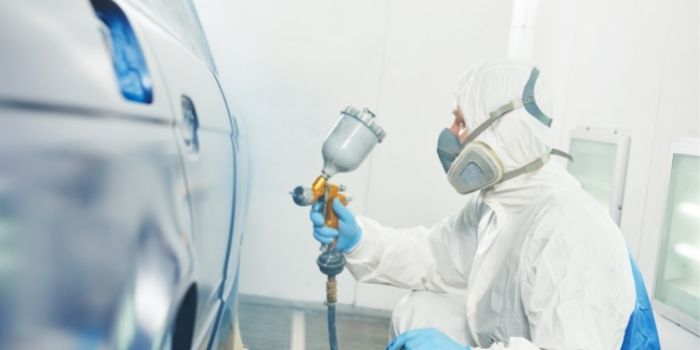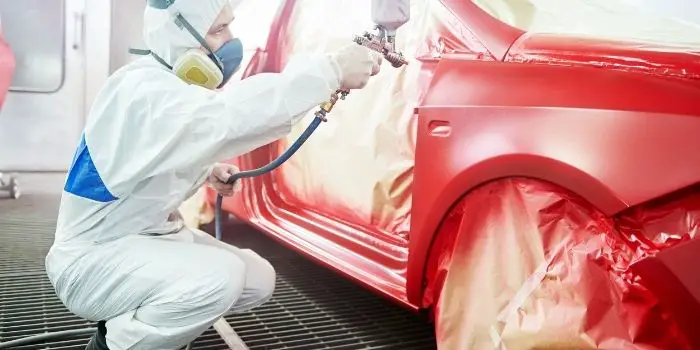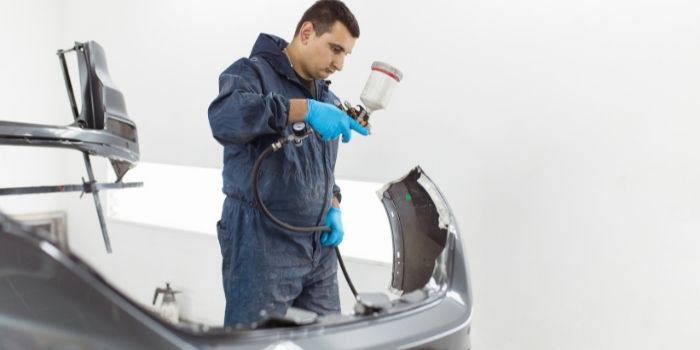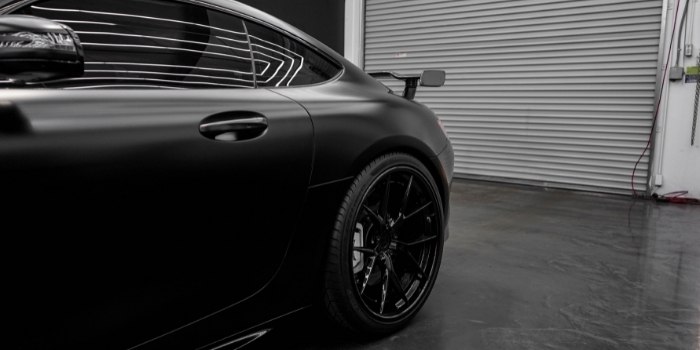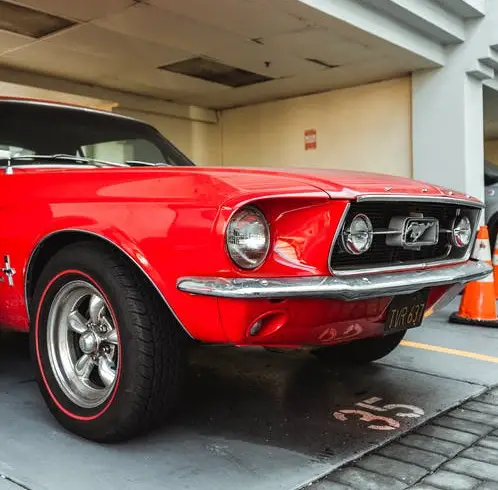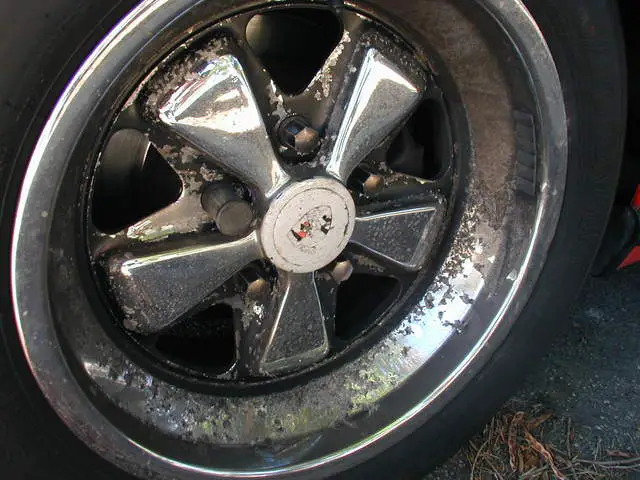Primer is a vital ingredient for most painting jobs and automobile paint is no different.
Whether you’re getting your car painted or simply getting some touch-ups done, most people advocate sanding and priming before putting the final finish.
So, what exactly the primer is?
In the automobile industry, primer is a paint-like compound that is often applied on newly sanded metal before applying the topcoat.
Different kinds of automobile primer, like paint, may be applied by a brush or sprayed with a spray gun.
While it may seem that utilizing automobile primer is an unnecessary step it is very crucial for a variety of reasons.
Some will be excellent at filling, others will be good at sealing against the weather.
Let’s discuss more why you need to use a primer.
Table of Contents
Why Should You Use a Car Primer?
Firstly, automobile primer aids in the adhesion of paint to bare metal.
The glossy metal surface will not bind effectively with the paint without primer as a buffer.
This causes flaking, peeling, and finally rust, which quickly converts a driveable automobile into the garbage.
They function as a bonding agent, allowing the paint to stick more tightly to the vehicle’s body.
They also help in preventing rust and damage by moisture by providing a few additional protective layers.
7 Different Types of Automotive Primer
The first step in achieving a long-lasting, durable vehicle finish is selecting the proper primer for the basis of your paint job.
With so many primer alternatives available, determining which primer system is best suited for your restoration job may be difficult.
Here’s a short rundown of the most prevalent varieties utilized in restoration and repair across the globe.
1. Epoxy Primer
For bare metal, a decent two-part epoxy primer is your best bet for long-term adhesion and corrosion protection.
While designed for maximum corrosion protection, epoxies often do not sand as well as urethane primer surfacers.
2. Polyester Primer
When you can’t always get your body to operate as well as you’d want, this is an excellent build.
However, polyester surfaces are often more brittle and prone to cracking than polyurethane surfaces.
In general, sprayable primers have the maximum filling capacity of any sprayable primer type.
3. Acid Etch Primer
Etch primers provide higher metal adhesion and corrosion resistance, but not as much as epoxy primers.
However, since etch primer dries quicker than epoxy, it is often utilized in collision repair to increase throughput.
In restoration work, epoxy primer is more often used on bare metals than etch primer.
4. Enamel Primers/Sealers
Enamel primers are inexpensive and give adequate sealing/corrosion protection, although they are prone to lifting/wrinkling.
5. Lacquer Primers/Sealers
Lacquer primer dries fast and sands well, but it may cause cracking and bubbling in the long run.
So it’s best utilized under a corrosion protection and paint coat for modest bodywork repairs.
6. Moisture Cure Urethane Primer
This vehicle primer is great for both paint adhesion and rust prevention for challenging repair tasks.
This is a great all-around primer option for accomplishing two jobs at once.
When exposed to moisture in the environment, it also cures fast, cutting curing times in half.
7. Urethane Primer Sealer and Surfacer
Urethane Sealer is a form of primer that is best utilized as a strong adhesive coat to which the paint will attach.
Urethane sealer does not have filling qualities, but it is ideal for sealing off a large quantity of filler or bodywork when painting a car that is already in excellent condition.
While Urethane Primer Surfacer is often utilized in combination with fillers and any putty required to accomplish repairs and is placed over a secondary base primer since it does not give the greatest corrosion protection.
Which Primer Should You Pick for Your Car?
If you’re looking for the greatest all-rounder primer, one that gives protection from corrosion while still allowing for maximum paint adhesion is the best choice.
1. For large-scale painting projects
When it comes to repainting/refinishing a significant part of your car, epoxy primer is typically the finest choice.
Being a two-component primer it’s easy to use and gives the best combination of paint adhesion, protection, and resistance from corrosion.
Epoxy car primer may be put over a variety of surfaces, including fiberglass and fillers, along with factory-finished steel.
Drying time is very rapid, which makes this a perfect all-rounder car primer for both auto repair companies and home DIYers.
2. For minor touch-ups
Polyester primer surfacer is ideal for small repair tasks that need some putty or light filling.
Since it has a good “build”, that is, it is thicker and can fill in little scratches and nicks effectively, it doesn’t require an additional filler or putty step.
Polyester car primer is good for spot repairs and is ideal for finishing modest vehicle body repair tasks.
3. For maximum corrosion prevention
Moisture cure Urethane primer will give the greatest protection from additional rust damage in circumstances when rust is already present and sanded away.
Urethane car primer is simple to sand, dries rapidly, and maintains color well.
What color should you use?
The most common colors for vehicle primers are black, white, grey, and red.
You’ll select one of these colors depending on the paint you’re using for your car’s base coat.
Each of these four primer colors is explained in detail below.
a) Black
Use a black primer for deeper paint colors such as black, dark blues and greens, and other dark hues.
When the colors are dark and rich, black primers provide deep, bright colors.
If you use a black primer as the basis for a dark color, such as black, it will need fewer coats of paint to completely cover your vehicle.
b) White
If you want your last coats of paint to stand out, use white priming.
White primer produces a brighter finish than the others and is ideal for lighter automotive colors as well as metallic paints.
c) Grey
Grey automotive primers may be used in the same manner as a white primer.
Grey primer is also excellent for metallic or pearlized automobile paint. It’s the most frequent hue for automobile primer, and it typically somewhat mutes the final paint tone.
d) Red
Red primer is most often used on rusted vehicles. Its composition functions as a rust inhibitor, making it an excellent alternative for older vehicles receiving a new coat of paint.
As you can see, when it comes to primers for your automobile, you have a few alternatives.
But ensure you maintain consistency regardless of the primer color you choose.
If you use one color of primer to prime your car, utilize that same color for all subsequent paint jobs.
Even the smallest difference in primer hues may and will affect the final layer of spray paint on your automobile.
If you use the same primer every time you paint your automobile, you won’t have to worry about color differences.
How to Use Auto Primer on Your Car Before Painting?
Paint adheres significantly better to a primed vehicle than to a non-primed vehicle. So, applying the primer is necessary when you want to paint your car.
Many professional vehicle painting firms will charge you a lot of money to refinish your car, but you can do it yourself if you have the appropriate materials and knowledge.
Before you start, you should cover your exposed skin, use eye protection, and wear a dust mask to avoid inhaling the primer.
Here are some steps to which you can refer.
Step 1: Clean Up the Dirt
The first step is to wash the automobile with water to remove any dirt or grit.
If you do not wash your automobile, any dust, grit, or grime on the car might interfere with the primer and paint stick to it.
In addition to cleaning your automobile, you should apply a grease or wax remover to eliminate grime that will not wash away with soap or water.
Step 2: Sand the Vehicle
Now that the automobile has been thoroughly cleaned, it is vital to sand down any rough spots.
Rough grain sandpaper should be used for really tough regions, while finer grit sandpaper may be used for smaller areas.
Fill any holes or dips that need to be repaired with putty and then sand the area down.
You want to remove any irregularities so that you paint on a leveled and smooth surface.
Step 3: Allow your car to dry
Before you begin painting, make sure the automobile is dry.
This may take many hours after washing the automobile, but it is entirely dependent on the weather.
Step 4: Protect the sections that will not be painted
It is critical to cover any places that you do not wish to be painted.
Cover all mirrors, windows, chrome, and other places with paper or fabric.
Make certain that all corners are taped down using masking tape.
If you go over the edge, you can just peel the paper away and there will be no difficulties.
Step 5: Priming the vehicle
Remember that priming is the very first stage in fully painting an automobile the way you want. So, make sure you do it right.
This means applying the primer evenly to any surface that will be painted.
If you’re just performing small touch-ups, for example, you can use a hand brush for manual primer application. Just make sure you work in smooth, even strokes to avoid the brush marks.
If on the other hand, you need to paint your entire vehicle, you should use a sprayer machine and an air compressor for applying the primer paint.
Ensure that you thin the primer appropriately to use in the sprayer gun and do not forget to soak/wash spray gun parts as soon as you’re finished with the project.
How many coats of primer do you need to apply?
The number of primers coats you’ll need to apply on your vehicle’s body will vary depending on the condition of your vehicle and the finish you desire to achieve.
For small touch-up jobs, you can apply one good coat to your vehicle.
However, for larger areas and whole-body work, applying two primer coats is the standard for most professionals.
This will help in getting the maximum coverage along with better paint adhesion/finish and rust prevention.
How long does it take for auto primer to dry and cure?
Once you have coated the auto primer nicely, it’s important to allow enough time for it to get dried, before you apply the paint.
Automotive primers mostly take between one and four hours to dry on average. But it’s good to read the labels and manufacturer instructions.
Remember, if you don’t allow enough time for the primer to dry, and apply the paint too soon, it may cause several problems that can be hard to fix.
So, to avoid these problems, allow extra time if you aren’t very sure.
Final Words
So far, we’ve discovered that primer adheres to metal and paint adheres to primer.
A good automotive primer coat seals the body and enables the filling of minor flaws.
Along with the 7 distinct kinds of primers on the market today, how to apply primer yourself, when to apply and when not to apply primer.
How to choose the right primer for you and also which color to go for are all covered.
We hope all your doubts regarding automotive primer are clear now.
If you liked what you read, let us know in the comments, and also don’t forget to share it with someone who you think might help.

Based in Orem (Utah) John Paterson graduated from Utah Valley University and has begun writing in 2009. He has a large wealth of experience in writing articles related to cars, automotive repair, wheels, cleaning/maintenance, and much more. He has also written instructional articles in a similar niche for a few online publications as well. Currently, he works as a mechanic in his personal garage shop where he loves serving his countrymen from his heart.

